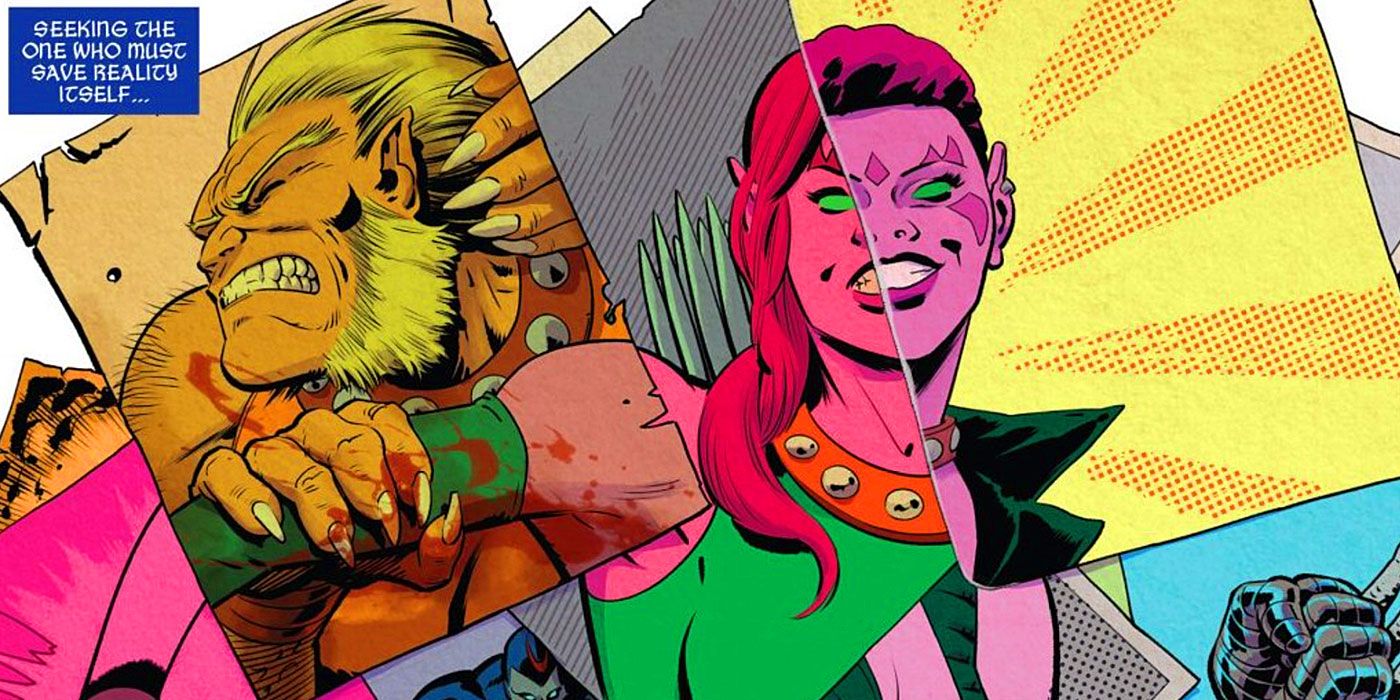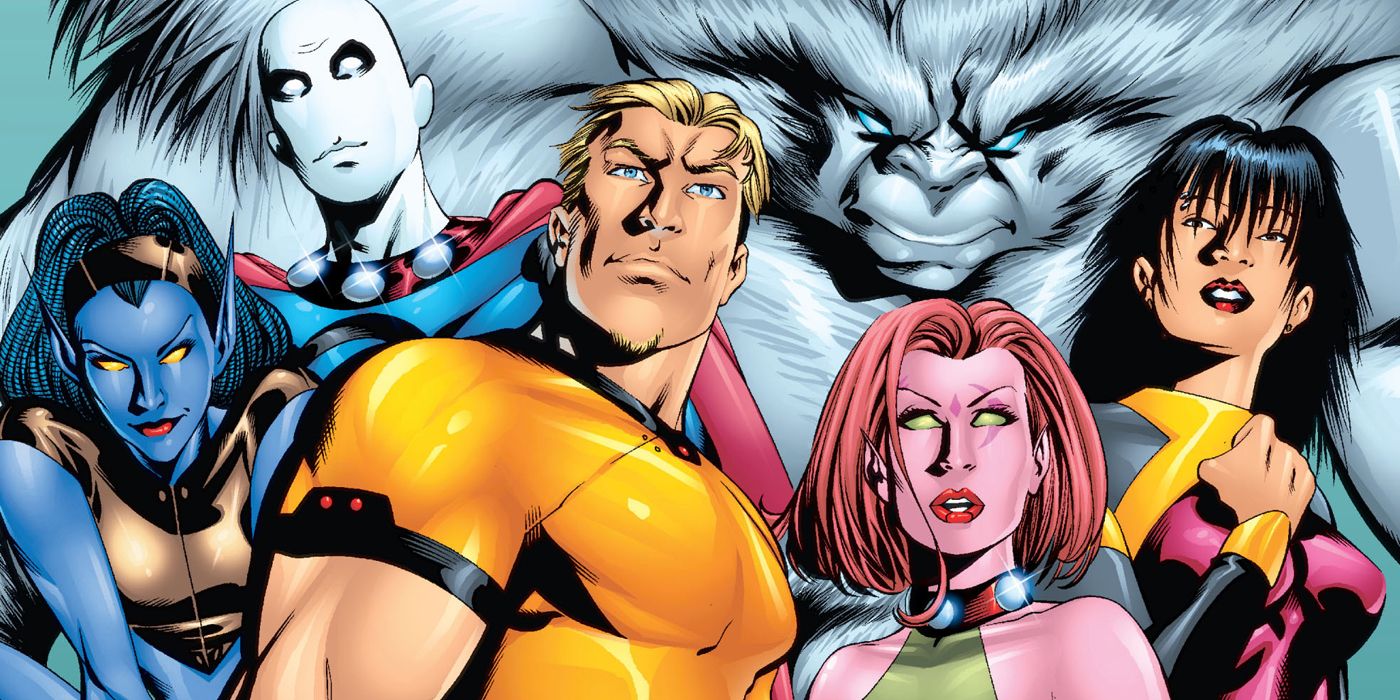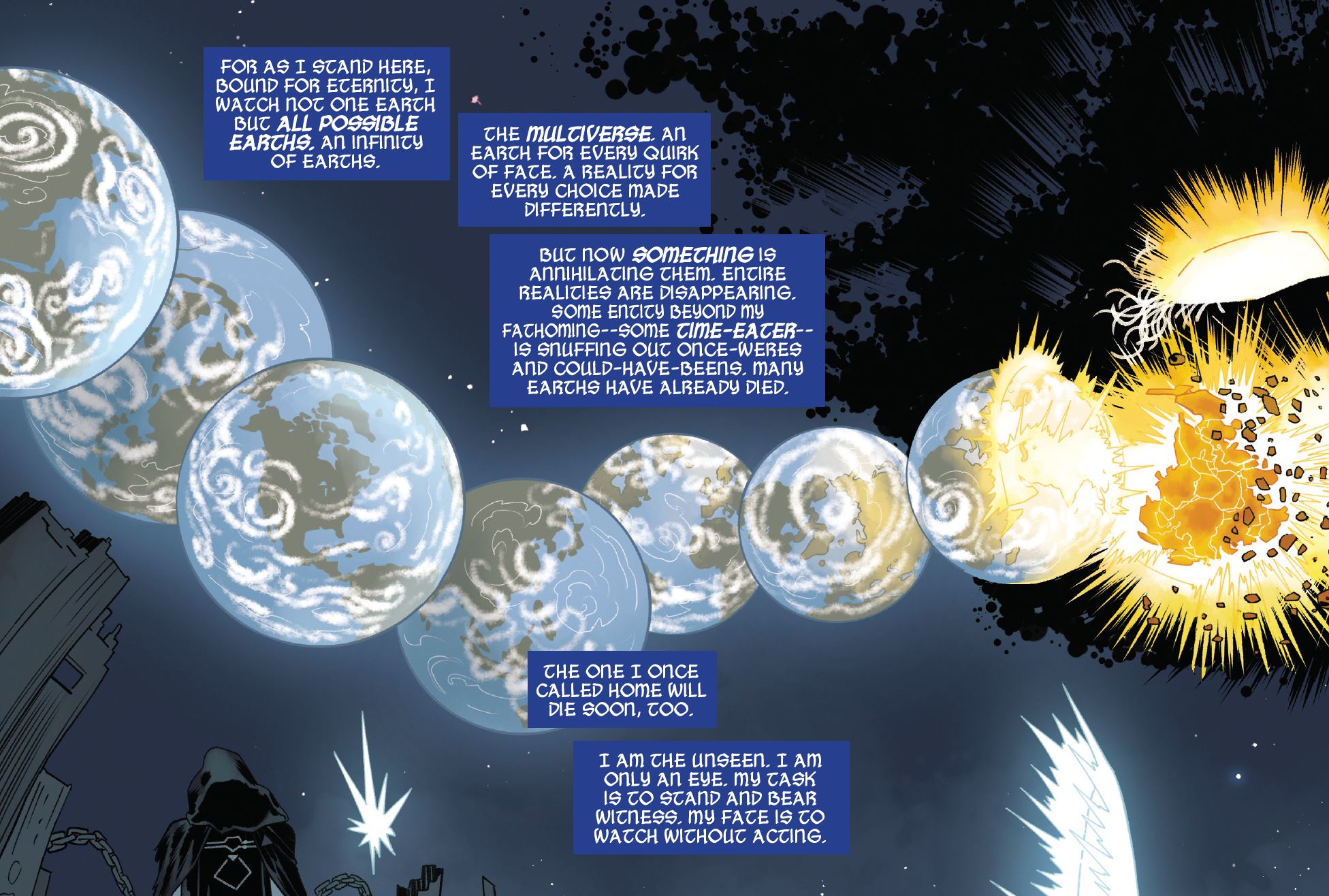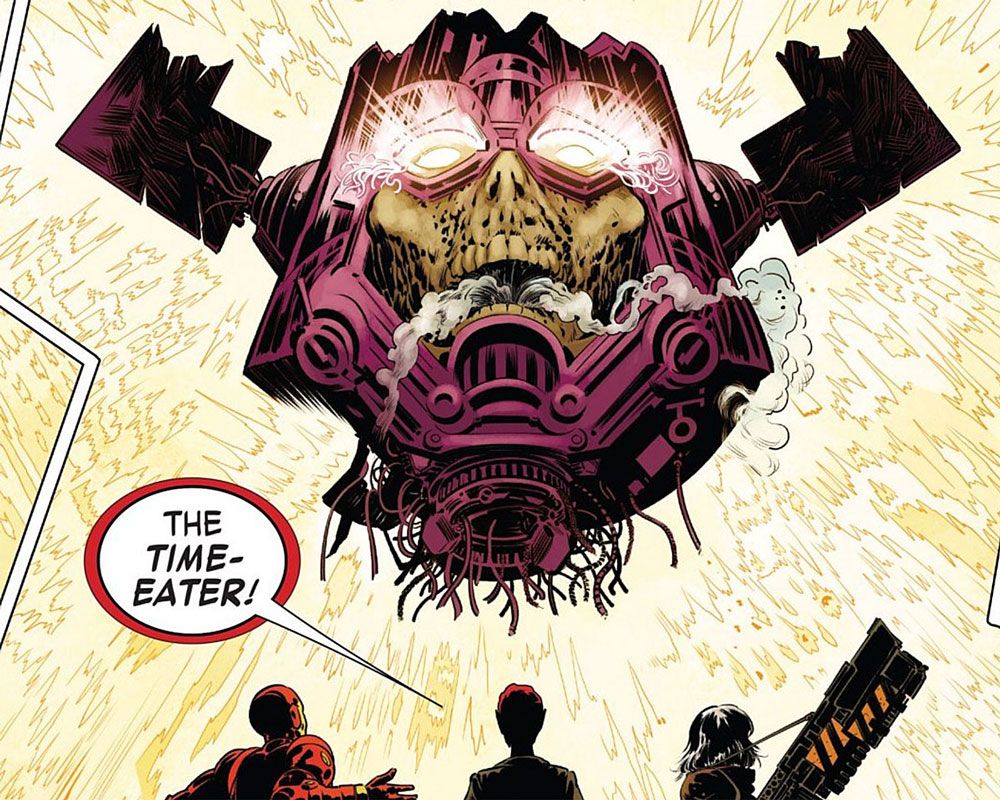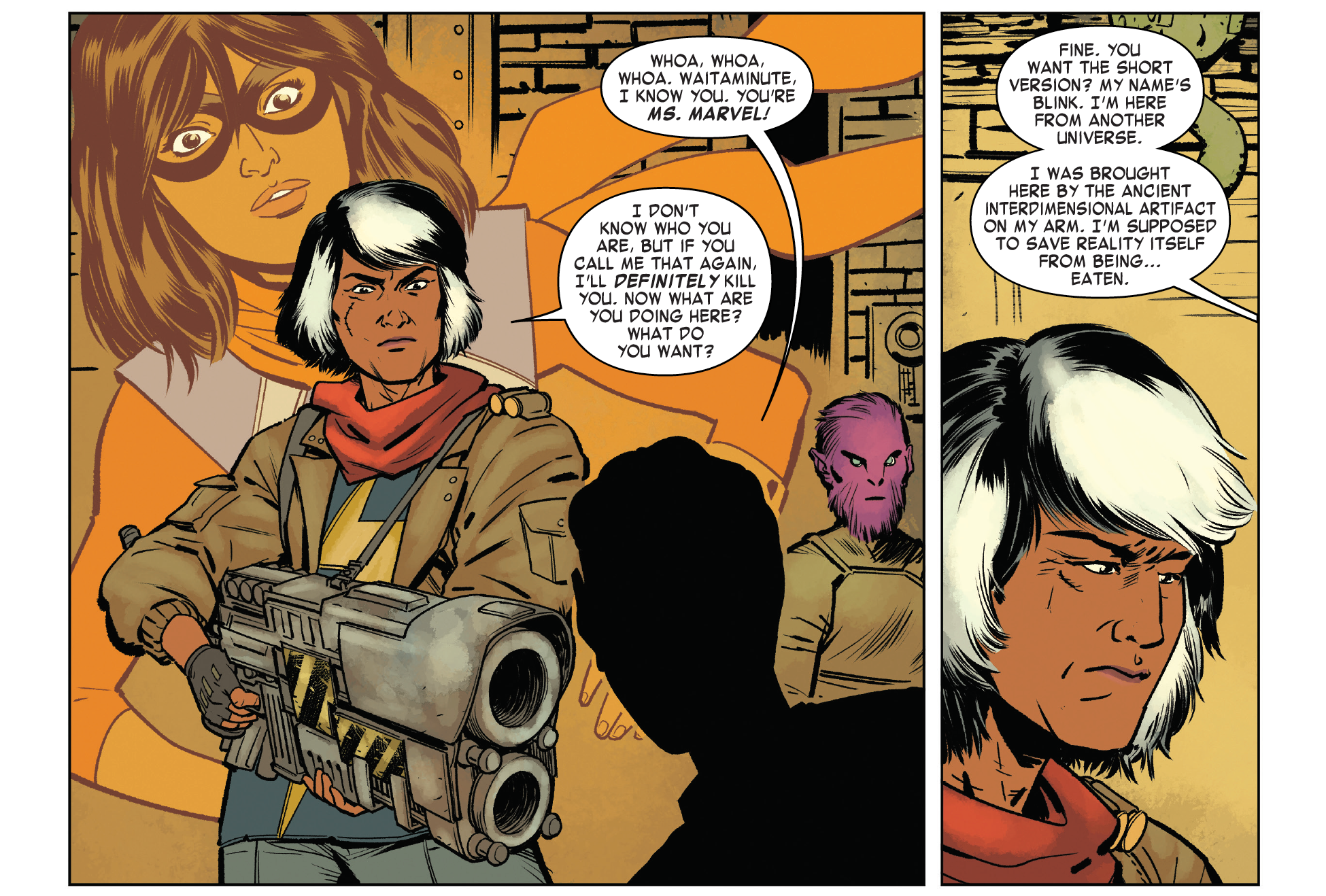This article contains spoilers for Exiles #1 by Saladin Ahmed and Javier Rodriguez, on sale now.
Fresh off his run on the critically acclaimed Black Bolt, writer Saladin Ahmed turns his attention to the Exiles, re-inventing Marvel's dimension-hopping X-Men for a new era. Artist Javier Rodriguez, inker Álvaro López, and colorist Jordie Bellaire set the tone with shifting styles and color palettes appropriate to each alternate reality, and Rodriguez's complex layouts strive to convey action coming at us from four dimensions and beyond.
With a fresh take on a classic X-Men concept, it's worth exploring how the new Exiles operates compared to what came before, checking in on what Ahmed and Rodriguez get right and what we might hope for in the coming issues.
RELATED: Exiles’ Reality-Consuming Villain Redefines a Major Marvel Character
A Brief History of Exiles
The first Exiles book to which Marvel can lay any claim would be the 1993 series published by Malibu's Ultraverse line, which the House of Ideas later acquired. This wasn't an alternate realities series, but the story of outcasts given superpowers in a tragic accident. It warrants a mention here for two reasons: First, it did something really fascinating in that it killed off the entire team in issue #4 and wrapped the series, even though Malibu had already solicited issues #5-7 -- by all indications, this wasn't an abrupt cancellation, but rather the plan from the start, with the extra solicited issues intended to keep the ending secret. Second, it served to create a trademark with an "X" in it, all but ensuring there would be an X-Men book called "Exiles" after Marvel bought the company.
And that's just what Marvel did. Exiles #1 launched in August 2001 from Judd Winick and Mike McKone, introducing a team of heroes "unstuck from time" and recruited by an entity called the Time Broker to repair damaged "What If?"-style realities. Hailing from the Age of Apocalypse timeline, Blink was the only hero from a reality readers had seen before, but due to the unique nature of that world, she also had fewer emotional attachments to the heroes most likely to save the world in other universes, making her the perfect leader -- she would be able to do what needed done. Guided by a gauntlet called the Tallus, the Exiles completed missions with the hope of one day returning to their home realities, which the Time Broker assured them would be fixed in a multiversal butterfly effect.
Winick wrote 37 issues of Exiles, a run that was defined as much by deeply personal stories as by adventures in time and space. He was succeeded by Chuck Austen, Tony Bedard, and finally Chris Claremont, who closed out the title with its 100th issue in 2008. A short-lived revival in 2009 by Jeff Parker and Salvador Espin ultimately failed to recapture the lightning in a bottle that fueled the original series.
What's New in the Fresh Start Exiles
Ahmed and Rodriguez's new Exiles takes as much inspiration from Crisis on Infinite Earths as it does from its previous series, perhaps more. This time around, Nick Fury Sr. -- now the cosmic being known as the Unseen -- watches helplessly from his home on the moon as countless realities are wiped from existence by a malevolent force called the Time-Eater. So Fury the Unseen is a bit like Pariah in Crisis, and Time-Eater operates rather like the Anti-Monitor. An alternate version of Fury arrives before him, only to blink out of reality as his world is destroyed, leaving behind the Tallus.
RELATED: Exiles #1 Introduces Readers to (Most of) the Dimension-Hopping Team
Summoned by "the multiverse itself," Blink can't really deny her new mission. And so it's off to recruit the team, without really knowing who's she's meant to recruit or how they're meant to tackle the threat. First up is a world where mutants and Inhumans alike have been driven almost to extinction, where Blink encounters an older, more grizzled Kamala Khan -- this character has been described as Old Woman Khan, after the immediate analogy to the famous Wolverine arc and universe, but from the tone and style of both the writing and art it's clear this episode is meant to evoke Frank Miller's The Dark Knight Returns. But when Khan's world is ripped away, the pair find themselves buddied up with the Insufferable Iron Lad. Then Kang attacks.
But don't worry!
Because then the Time-Eater attacks, devouring reality and leaving our heroes in a very precarious situation indeed.
Oh, and the Time-Eater is the dessicated, severed head of Galactus.
Page 2: [valnet-url-page page=2 paginated=0 text='How%20the%20New%20exiles%20Improves%20on%20the%20Concept%20-%20And%20Where%20it%20Falls%20Short']
The new series does a few really smart things. Rodriguez's new design for Blink is excellent, and Ahmed gives her a voice more in line with fresh, young characters than the more standard superhero dialogue we've seen from her before. The shift can be jarring at first for readers familiar with the character, but it's absolutely the right move. Introducing a version of the immensely popular Kamala Khan but making her the battle-hardened veteran is also really fun to see. Both in terms of characterization and art, there's a lot more energy here than in 2001's Exiles.
But on a story level, this first issue gives us a lot less to work with than the original. In Winick and McKone's debut issue, we met the entire team (or at least its first iteration), learned how these missions would work, and even got a glimpse of the world of the Exiles' first mission. Here, we got Fury moaning on the moon, the introduction of a couple team members from barely-defined worlds, and the revelation of a multiversal threat. What's weird is there isn't less exposition in the new Exiles #1 than there was in the old.
RELATED: Fan-Favorite Agent Carter Becomes Captain America in Exiles Series
The concept, too, is weaker in the new version. Sure, a version of Galactus who can eat all of time and space is a massive threat, but there are plenty of massive threats in the Marvel Universe -- Annihilus comes immediately to mind, I'm sure we can all name others. But the concept of the original Exiles was so great precisely because it lacked a central threat; it was a monster-of-the-week series, chock full of the worst possible realities, where any mission might lead to death or salvation. The characters grew weary because their war seemed endless, and yet they had no choice but to press on. Failure meant not only the destruction of an entire timeline, but the heroes' own demise back in their home universe.
And that's what's missing so far in the current series -- those personal stakes. Fighting to save all of existence is great and all, but the threat of personal loss is more urgent, carries so much more dramatic weight. From a narrative standpoint, you care less about the Exiles saving a world where Captain America is still a werewolf (as they did in the original series) than saving Morph from reverting to a puddle of goo (the consequence should he fail). Think locally, act globally.
RELATED: Exiles Writer Explains the Team’s Cartoony Baby Wolverine
Ahmed is an extraordinarily talented writer, as attested by Black Bolt and his novel Throne of the Crescent Moon, which were both nominated for the Hugo Award. And Rodriguez and company's stellar art is a perfect fit for this book. They very well could turn Exiles into something really special, and there are few pieces in this first issue pointing in that direction already. But this issue is a halting start, and the sooner Ahmed and Rodriguez gather the team and get down to the business of making us care about them, the better.
The devourer of universes can wait.

